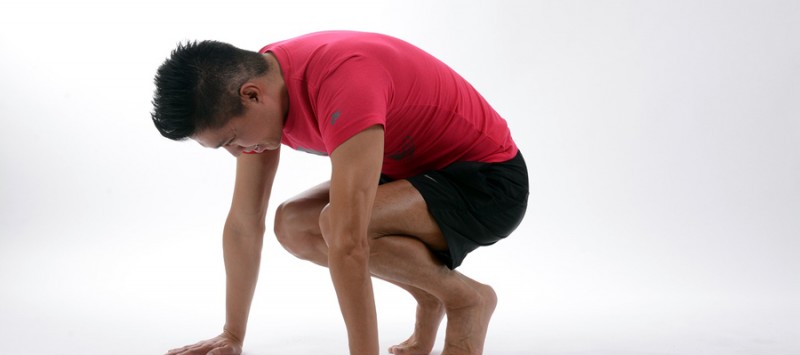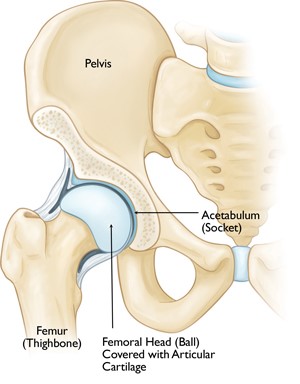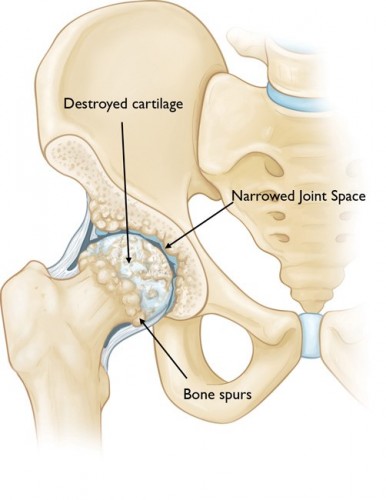By Kaitlyn Mulvaney, SPT
Hip Osteoarthritis: Causes, Symptoms, Treatment Options
What is Hip Osteoarthritis?
Hip osteoarthritis (OA) is degeneration of the hip joint, it is also known as age-related arthritis. This type of degeneration is typically seen in individuals who are over the age of 50, but can also appear earlier in life. With hip OA, the articular cartilage that lines the bones in the hip joint becomes inflamed or injured. This leads to the cartilage breaking down and fraying and a narrowing of the joint space. This damage to the articular cartilage causes the bones to come in contact with each other, which can lead to the formation of bone spurs.
The Hip Joint
The hip joint is referred to as a ball and socket joint. The head of the femur is the ball and the acetabulum of the pelvis is the socket. This type of joint allows for a large range of motion. The joint is lined with a small layer of tissue called articular cartilage, which helps to decrease the friction at the joint and also absorbs shock. The joint is then surrounded by a synovial membrane, which helps to produce a fluid that lubricates the joint and allows for smoother motions. Although the hip joint can produce a lot of motion, it is also relatively stable. The stability of the hip joint comes from the boney alignment, the labrum around the acetabulum and also the ligaments that surround the joint.
What Causes Hip OA?
- Age
- Genetics
Injury or trauma
- Developmental dysplasia (improperly formed joints)
- Obesity
Signs and Symptoms
- Stiffness, especially after sitting for long periods of time or when getting out of bed in the morning
- Pain developing slowly over time, pain can present in the groin or thigh
- Swelling
- Sensation of the bone rubbing together
- Locking or sticking of the joint
- Decreased ability to move the hip
What Are the Treatment Options?
There are many different options for treating hip OA. The most important factors when treatment hip OA, are controlling pain levels and making sure that an individual can function in their daily life. The first and most conservative option for treatment is to rest and use a cane in the opposite hand, which can help take stress off the hip. Minimizing activities that cause pain and switching to activities that are less stress on the joints such as swimming, can help to slow the progression of hip OA. Physical therapy can also be helpful to strengthen the muscles that surround the hip and increase hip mobility. Other treatments include weight loss, exercise and over the counter medications to control pain.
If conservative methods fail, then there are surgical options. One possible surgical option is to undergo a hip resurfacing. This surgery involves removing the joint surface and replacing it with a metal cup. By removing the damaged surface, this surgery can delay a hip replacement surgery. The second option is to have the hip replaced. This involves removing the whole head of the femur and replacing it with a metal ball. A metal shell and plastic liner then replace the acetabulum.
If a hip replacement is necessary, then physical therapy can be key to getting back to full function.
Physical Therapy for Hip Osteoarthritis OA
When struggling with hip OA or rehabbing after a total hip replacement, physical therapy can help. Physical therapy will focus on increasing motion, reducing pain, and improving strength. Pain relief techniques can include soft tissue massage, ice, heat and exercises. To improve motion, a physical therapist will start by passively moving the hip, and progress to active exercises and stretching. Strengthening the hip will also be important in rehabilitation. If there are muscle imbalances around the hip, then this can lead to increased stress on the joint. By strengthening the muscles around the hip, this will help to increase stability and decrease the stress experienced in the hip.
See for yourself why treatment and prevention at Capital Area Physical Therapy & Wellness is the ideal solution to help you live a pain-free, active life. Call one of our physical therapy clinics in Malta, Queensbury or Saratoga NY at (518) 502-1154 to schedule an appointment!
References:
- Osteoarthritis of the Hip. OrthoInfo. http://orthoinfo.aaos.org/topic.cfm?topic=a00213. June 2014. October 3, 2016.
- Hip Osteoarthritis: Symptoms, Treatments, Exercise, Causes. WebMD. http://www.webmd.com/osteoarthritis/guide/hip-osteoarthritis-degenerative-arthritis-hip#3. October 3, 2016.
Osteoarthritis of the Hip. MoveForwardPT APTA. http://www.moveforwardpt.com/symptomsconditionsdetail.aspx?cid=3ebaeb44-7d44-4520-b3af-d53a34ce480c. April 10, 2013. October 3, 2016.
Save



 Injury or trauma
Injury or trauma


